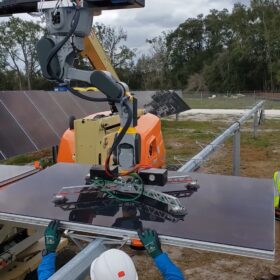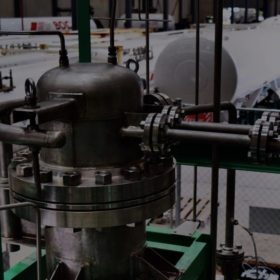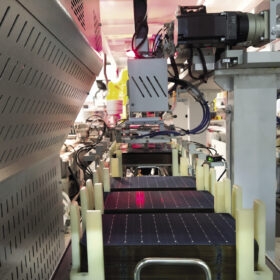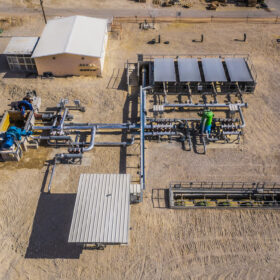Tesla to build new Megapack factory in China
Tesla has revealed plans to build a new Megapack battery factory in Shanghai, according to the Xinhua news agency.
Robotic solution to address installer shortage developed by US company
Sarcos has designed a robotic PV construction solution that delivers, detects, lifts, and places PV modules in large-scale solar plants. It has recently field tested and validated the prototype solution in a pilot project funded by the US Department of Energy.
Australia’s approval of renewable projects has doubled, says Plibersek
Australia federal Labor government has approved 11 new renewable energy and transmission projects in since the election in May 2022. There are currently another 95 renewable projects under assessment.
Perth-company with UWA hydrogen technology signs deal with Japan
Seeking to commercialise hydrogen technology developed by the University of Western Australia, Perth-based Hazer Group has entered into a somewhat vague agreement with Japan’s Chubu Electric Power Company and engineering firm Chiyoda Corporation.
Early works begin on Mornington big battery after developer bought by Hong Kong outfit
Australian renewable developer GMR Energy, formerly Maoneng, has started work on its 240 MW / 480 MWh battery project on Victoria’s Mornington Peninsula. The company has entered into an early works agreement with network AusNet, and is aiming to complete the $330 million (USD 220 million) by 2024, two years after the company had originally forecast.
Battery hydrogen vs. battery flywheel
Scientists in Italy have looked at how flywheel storage and reversible solid oxide cells could be integrated with lithium-ion batteries in minigrids powered by solar. They found that flywheels combined with batteries could be the cheapest option for power smoothing.
India to annually tender 50 GW of renewables over next five years
The structured bidding trajectory of India’s tenders will provide sufficient time for renewables developers to plan their finances, develop business plans, and manage the supply chain more efficiently, says Indian Power Minister R.K. Singh.
India’s solar module manufacturing capacity could hit 110 GW by 2026
India could become the world’s second-largest solar manufacturer by 2026. It will also have a notable presence in all upstream components of PV production, such as cells, ingots/wafers, and polysilicon, according to a new report.
‘Least-cost’ model for compressed air energy storage
Stanford University researchers have created a model to assess how much compressed air storage capacity might be needed for the deep decarbonisation of power systems, while compensating for the variability of wind and solar-based power systems. They applied the model to California’s energy system and found that compressed air could be very competitive on a dollars-per-kilowatt-hour basis.
Weekend read: Renewables’ human hurdle
Community opposition to renewable projects tends to be dismissed as NIMBY-ism, an attitude of not-in-my-back-yard. To do so fails to recognise the character and potential claws of the globally growing movement, as well as the renewable sectors’ own role in rearing resentments. Australian reporter Bella Peacock investigates the emotional thread that ties the particularities of opposition movements together, and ways developers can defuse the charge.















